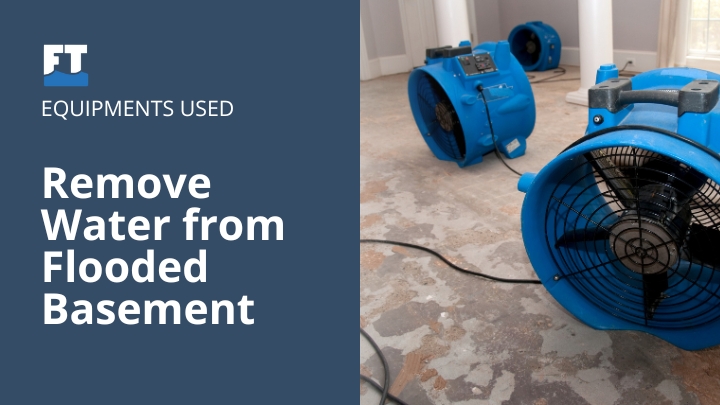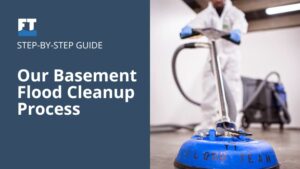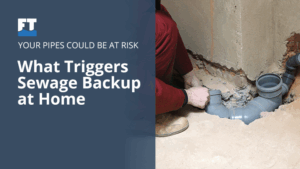A flooded basement can cause a lot of problems fast. The longer water sits, the more damage it causes, from ruined floors to dangerous mold growth. When the water starts creeping in, you need more than a mop and bucket. This is where the right equipment makes all the difference.
There are tools and equipment that can help you manage water removal from a flooded basement. In this guide, we’ll walk you through what equipment is used to remove water from a flooded basement.
Equipment for Removing Water from a Flooded Basement
When it comes to cleaning up basement flooding, using the right equipment is important. Here’s a breakdown of the must-have tools:
1. Water Pumps
When dealing with flooding, one of the actions to take when your basement floods is to use a water pump to remove large amounts of water quickly. These pumps are powerful and can move a large volume of water in a short time. There are different types of pumps you might use, including:
- Submersible pumps: These are ideal for removing water from areas that are submerged, like a flooded basement. They are powerful and efficient, quickly removing the water.
- Utility pumps: These are smaller than submersible pumps but are still effective at handling water removal in smaller floods.
Using a water pump speeds up the removal process, helping to reduce the amount of time water sits in your basement, which can lead to mold and further damage.
2. Wet/Dry Vacuums
Once the majority of the water has been removed with a pump, a wet/dry vacuum is perfect for getting the remaining water out. These vacuums are versatile and can handle water and debris without damaging the motor. They’re particularly useful for cleaning up after a smaller flood or for handling residual moisture that the pumps leave behind. Professionals often use extreme extraction techniques with these vacuums to make sure no water is left behind.
Wet/dry vacuums can also help with cleaning up areas that are hard to reach or in tight corners where water might be trapped. While not as fast as a pump, they’re excellent for getting the job done without leaving any water behind.
3. Industrial-Grade Dehumidifiers
After the visible water has been cleared, you’ll need to focus on drying the space. Dehumidifiers are used in this process. These machines remove moisture from the air and help prevent mold and mildew from growing. In a basement, humidity levels can be high even after water removal, making dehumidifiers an essential tool in the cleanup process.
High-capacity dehumidifiers can be placed around the affected area to absorb moisture from both the air and the materials (walls, floors) in the basement. Professional-grade units work much faster than home models and can run continuously for days if needed. A basement flood cleanup company uses them along with air movers to speed up drying.
4. Fans and Air Movers
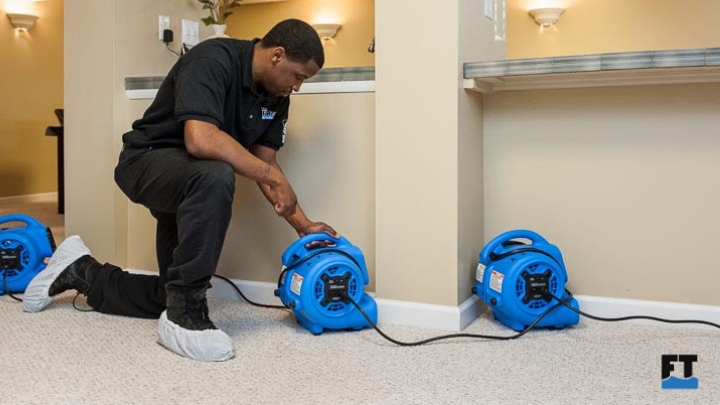
Fans and air movers are critical when it comes to drying out a flooded basement. These machines push air through the room, promoting evaporation and speeding up the drying process. They are particularly useful for drying the floor and walls quickly.
There are industrial-grade fans specifically made for drying wet areas. When you position fans around the room, you’ll maximize airflow and reduce the amount of time it takes for the basement to dry completely. This equipment is especially helpful in preventing mold and mildew buildup by increasing airflow and lowering humidity.
Other Helpful Tools for a Flooded Basement
Moisture Detection Tools
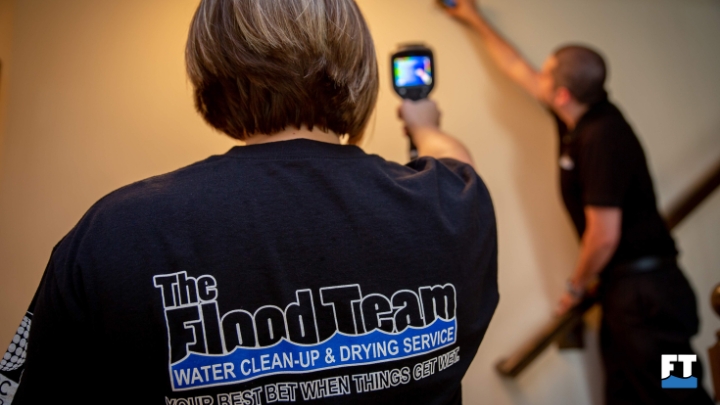
Once the water is gone, it’s important to check for any moisture that might be hiding. Water can get trapped in walls, under floors, or in ceilings, and you can’t always see it. That’s why we use moisture mapping along with moisture meters and thermal cameras to find it.
Moisture meters measure the amount of water in materials like wood or drywall. Thermal cameras help spot cooler spots on walls or ceilings where moisture might still be hanging around. These tools make sure your basement is fully dry. If moisture stays hidden, it can cause damage or mold later on.
Antimicrobial Treatments
Once the water has been cleared and the basement is dry, applying antimicrobial treatments can help prevent mold and mildew growth. These treatments are safe to use and can be sprayed onto the affected surfaces to kill bacteria and stop mold from growing. After flooding, even after the water is gone, bacteria and mold can still thrive in the damp environment of a basement, so antimicrobial treatments are a key step in the restoration process.
DIY or Call in the Basement Flood Cleanup Professionals?
Now that you know the equipment needed, the next question is: Should you tackle the water removal yourself, or call a professional? Here’s what to consider:
When to Do It Yourself
If your basement flood is minor, such as a few inches of water or a small overflow, DIY cleanup might be doable. Using the equipment above, like water pumps, wet/dry vacuums, and fans, you can manage the cleanup. However, it’s important to be careful with heavy lifting, and you’ll need to keep an eye on potential mold growth.
When to Hire Professionals
If your basement has severe flooding or if water has been sitting for a while, it’s best to call in professional basement flood cleanup services. Flooding that affects structural areas, electrical wiring, or furniture often requires expert intervention. Plus, professionals have access to advanced tools and can do the job much quicker. The Flood Team specializes in water removal and restoration, helping you save time, effort, and prevent further damage.

Final Thoughts
Dealing with a flooded basement is never easy, but using the right equipment can make the process much more manageable. Water pumps, wet/dry vacuums, dehumidifiers, and fans are all key to getting the water out and drying your space quickly. For more severe floods, consider reaching out to professionals who can handle the cleanup safely and efficiently. With the right tools and help, your basement will be dry and mold-free in no time.
Facing a Flooded Basement?
Using the right tools like pumps, vacuums, dehumidifiers, and fans makes all the difference. Let The Flood Team handle it with professional equipment and expert care. Book a free evaluation today and get your basement dry and safe fast!
FAQs
What’s the best equipment to use for removing water from a flooded basement?
Water pumps, wet/dry vacuums, dehumidifiers, and fans are the essential tools for removing water and drying out a basement.
Can I remove water from my basement on my own?
Yes, if the flooding is minor, you can use water pumps and vacuums to do it yourself. But for larger floods, it’s best to hire professionals.
How do I prevent mold after my basement floods?
Using dehumidifiers and applying antimicrobial treatments will help prevent mold. It’s also important to ensure the area is fully dried out.
What should I do first if my basement floods?
The first step is to turn off the electricity in your basement to avoid electrical hazards. Next, remove water using a pump or wet/dry vacuum.
Can I use a regular household vacuum to remove water from my basement?
No, regular household vacuums are not designed to handle water. Use a wet/dry vacuum, which is built for this purpose and can safely handle water removal.

